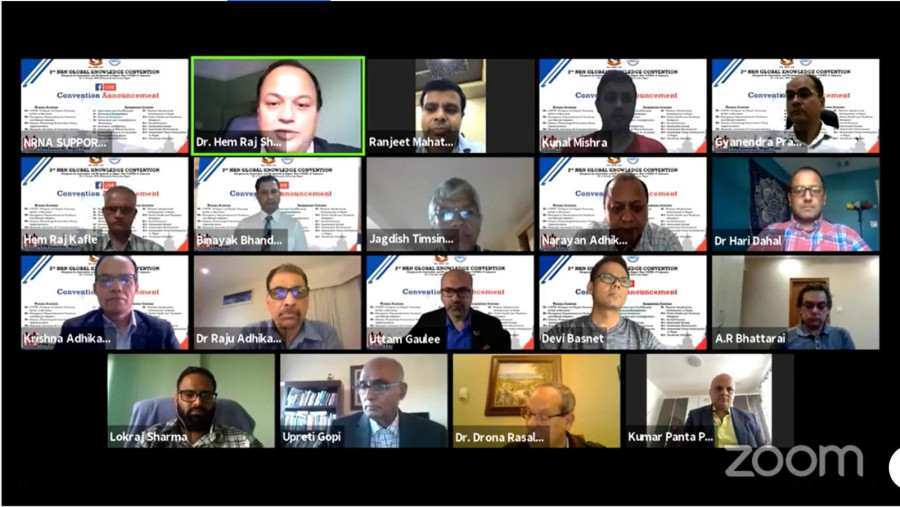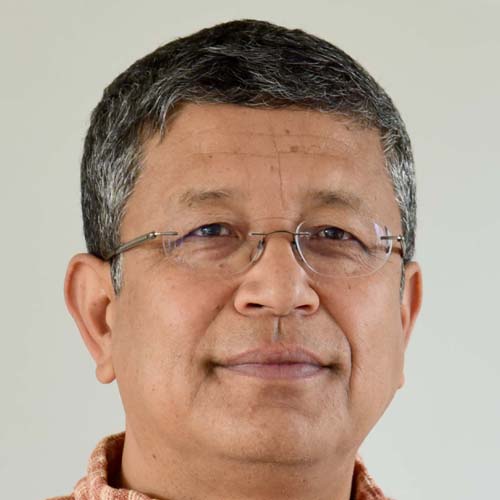Columns
Manels and the Nepali heart
The consistent case of only a few women being invited to speak at most conferences reeks of tokenism.
Deepak Thapa
I have to admit to a slight twinge of envy as a young man upon learning that ‘Down Under’, the 1980s hit by the Australian band Men at Work, had been adopted as the unofficial national anthem of the country Down Under. Nepalis were still living under the Panchayat heel at the time and subjected to insipid renditions of ‘Sreeman Gambhir’, certainly not a number one could belt out in joyous spontaneity. We had to wait many more years before we were able to boast of our own unofficial anthem in the form of ‘Yo Man Ta Mero Nepali Ho’ by the rock band 1974 AD. With lyrics referring to an exceptional set of qualities Nepalis are endowed with as well as heirs to a glorious past, combined with a very catchy tune, it is no wonder that the song became a huge hit, and remains popular even today, nearly two decades after its release.
Perhaps nowhere is the song’s standing higher than among Nepalis spread across the world. Understandably so, given that it brims with patriotism and has the stirring refrain that we retain our Nepali-ness no matter what we do or where we go; the heart remains pure Nepali. Unfortunately, the heart within the umbrella body that speaks for those without the country, the Non-Resident Nepali Association (NRNA), appears to hark to a bygone era. For, despite the momentous changes society back home has undergone, it does not appear to have affected the NRNA, a fact made clear with some force during the recently held NRN Global Knowledge Convention.
Consider this screenshot from the online meeting of the steering committee of the Convention held in July earlier this year. If there ever was a ‘manel’, as male-only panels are becoming known, that was it. Eighteen faces gracing the screen and not a single woman. What makes it worse is that not all of the attendees are non-resident Nepalis, since I spy among them a childhood friend who has lived in Nepal all his life; meaning not one Nepali woman—whether in the country or abroad—was believed capable of joining that group of worthies. There were actually two women among the 31-strong steering committee (of whom 18 were in on that July call). I know for a fact that at least one of the two was brought on board at the urging of a male member of the steering committee who had found their absence rather amiss. Without trying to second-guess the NRNA, having just two women in the committee feels suspiciously like what it looks like—tokenism.
Since the Knowledge Convention was showcased as an opportunity for the country to harness the expertise of the global Nepali diaspora, a group presumably more enlightened than their stay-at-home compatriots, with all the exposure they would have received, the exclusion of women was all the more jarring. While there were admittedly very few manels at the conference proper, the fact that such panels were even conceived of is quite inexplicable. And, where women did figure among the panellists, in nearly all instances they were the sole female representation, strengthening the impression that they were invited for reasons of their gender alone.
In all fairness, it is perhaps not right to single out the NRNA for the scale of this omission. As the 1974 AD song goes, they are Nepalis after all. Particularly when the home country is led by a prime minister who believes that it is at the instigation of NGOs that women are demanding representation at levels guaranteed by the constitution of which he was perhaps the most enthusiastic endorser. Such a parochial view is only to be expected from someone who routinely chairs the all-male panel of the ruling party’s nine-member apex body, the secretariat, and seemingly finds it perfectly normal.
Regardless of anyone’s viewpoint, the world has moved on and it will soon become more difficult to justify manels. A courageous blow against that outdated tradition was struck by Dr Francis Collins, Director of the American government’s National Institutes of Health, who declared to much acclaim that ‘it is time to end the tradition in science of all-male speaking panels, sometimes wryly referred to as “manels.” Too often, women and members of other groups underrepresented in science are conspicuously missing in the marquee speaking slots at scientific meetings and other high-level conferences. Starting now, when I consider speaking invitations, I will expect a level playing field, where scientists of all backgrounds are evaluated fairly for speaking opportunities. If that attention to inclusiveness is not evident in the agenda, I will decline to take part.’
It is unfortunate that his ultimate boss, Donald Trump, has no use for such sentiments, but as someone who heads a leading funder of research in the biomedical sciences worldwide, Dr Collins’ stance has certainly made a difference. More and more speakers have begun declining invitations to speak at manels. Even though that push has not quite seeped into Nepal so far, it is only a matter of time. We all have a part to play in hastening it either by following Dr Collins’ lead, or at the very least by reporting manels to websites dedicated to ridiculing them such as Say No to #ManPanels or Congrats, you have an all male panel!.
Dr Collins had also made the important point of ensuring the inclusion of ‘women and members of other groups underrepresented [added emphasis]’ as a condition for his participation in events. That is where the NRNA seems to have missed out as well. Just look at the surnames of the 18 men in the conference call, starting from the top left: Sharma, Mahato, Mishra, Pradhan, Kafle, Bhandari, Timsina, Adhikari, Dahal, Adhikari, Adhikari, Gaulee, Basnet, Bhattarai, Sharma, Upreti, Rasali and Panta. Here, too, the record of the Nepali government’s is not much better. A cursory glance at the names of individuals appointed to various government positions would throw up a permutation of similar-sounding surnames. At least we can be quite proud that outside of the government, it has become the norm to ensure greater social heterogeneity even if not everyone has unreservedly embraced the reasons to do so. If our national anthem celebrates the Nepali nation as a garland of a hundred flowers, it is only natural to celebrate that diversity in practice as well. Just as we should acknowledge the prominent place accorded to women in our national emblem, a decided change from the two armed men that were sported for decades past—another manel that deserved getting rid of.




 8.12°C Kathmandu
8.12°C Kathmandu















